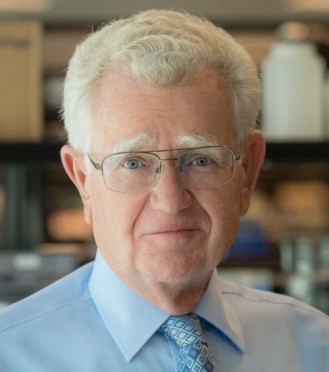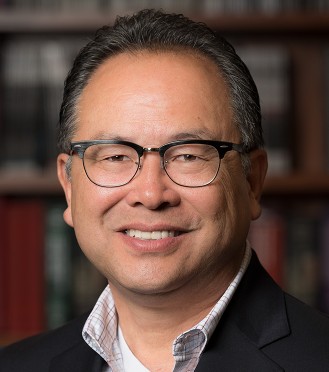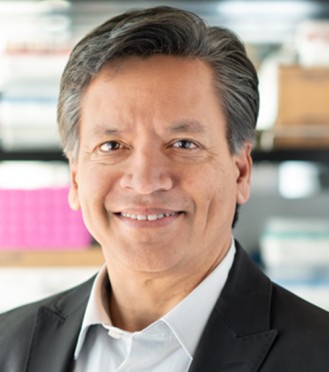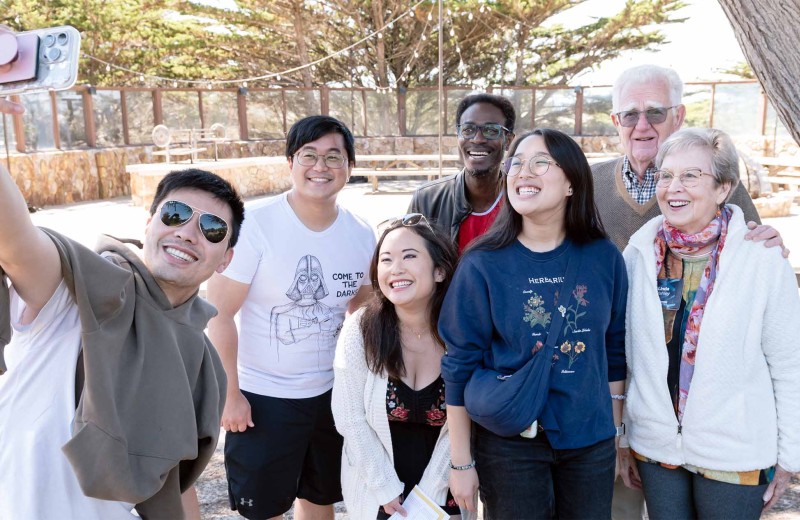Gladstone NOW: The Campaign Join Us on the Journey✕
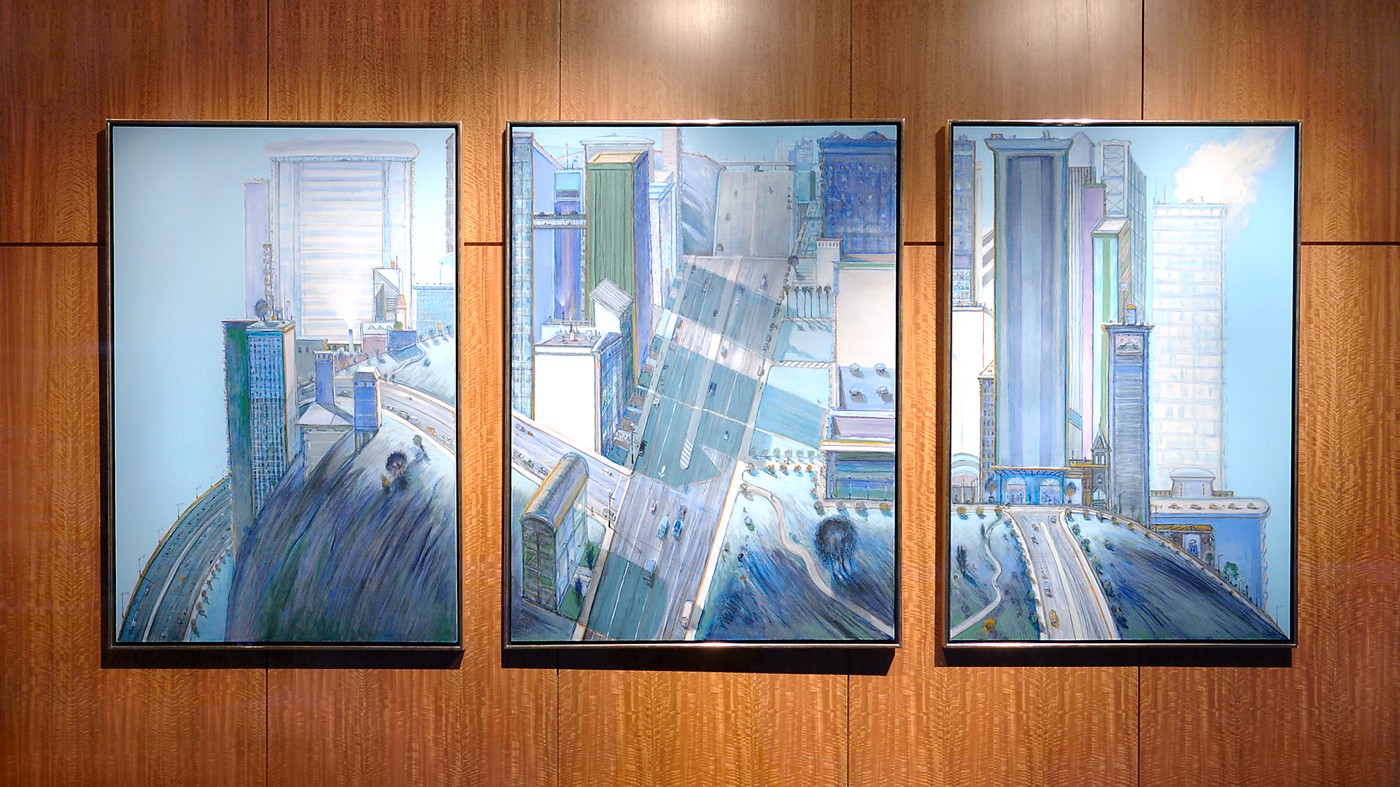
"City Views" by Wayne Thiebaud has been hanging in the lobby of Gladstone Institutes since 2004. It is now being auctioned off to create a new fund that will support postdoctoral scholars.
A 12-foot-wide painting that has graced the lobby of Gladstone Institutes’ building since its opening may soon play a very different role, providing expanded support for future generations of young scientists.
Painted by renowned Northern California artist Wayne Thiebaud, City Views depicts the San Francisco cityscape across three panels in a format known as a triptych—believed to be the only one produced by the artist, who died in 2021 at the age of 101. Beyond his artistic work, Thiebaud was also a teacher, with a long career at the University of California, Davis.
Gladstone has decided to sell the painting and leverage the proceeds to create an enduring fund, similar to an endowment, that will support its postdoctoral scholars for years to come. City Views will be auctioned by Christie’s Auction House, which estimates the work could bring between $10 million and $15 million for the new fund.
“Mr. Thiebaud placed great value on teaching and mentoring, with many of his mentees going on to become influential American artists themselves,” says Gladstone President Deepak Srivastava, MD. “To honor that legacy, proceeds from the sale will help support our postdocs along their journey to becoming leaders in biomedical science.”
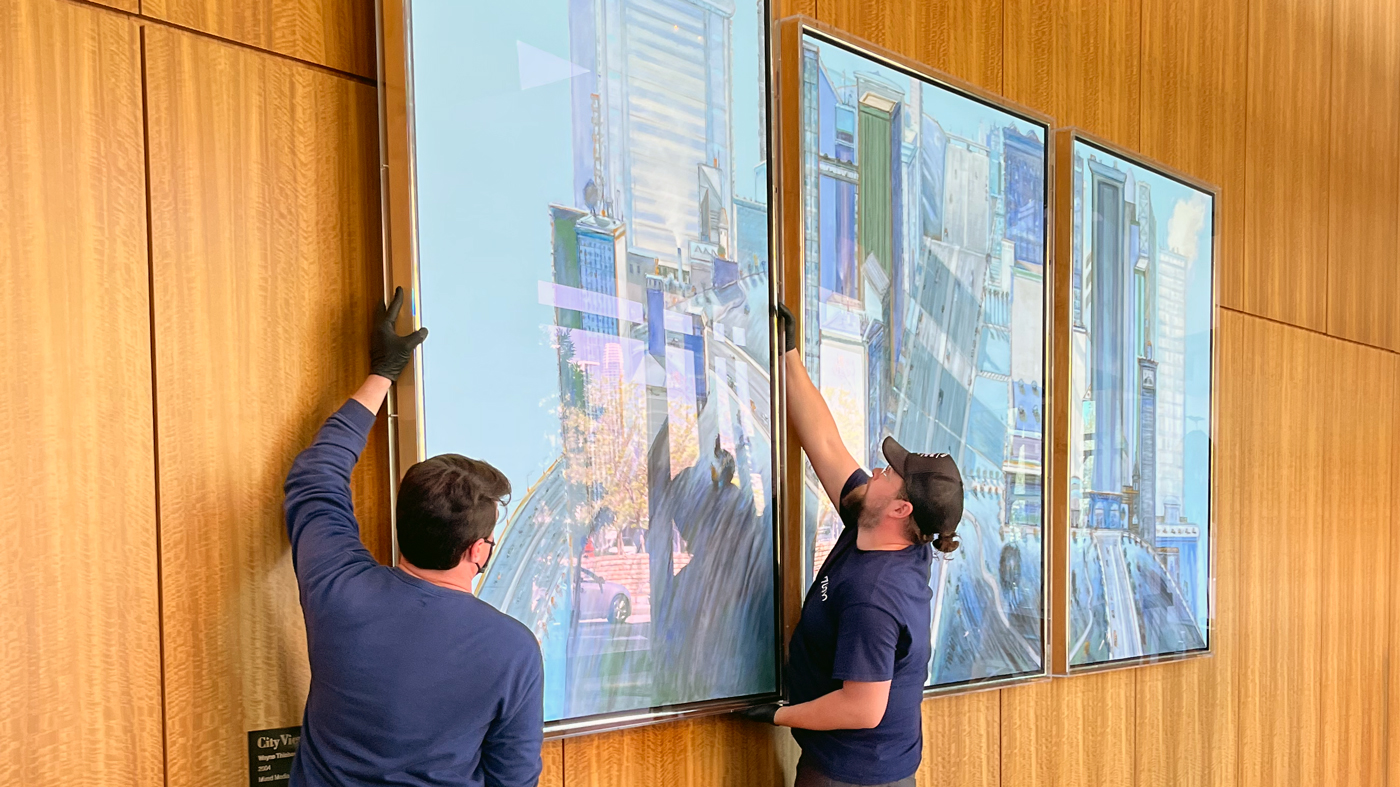
"City Views" was recently removed from the Gladstone lobby to get ready for the auction.
The Thiebaud painting, with its vertical streets rising toward the sky symbolizing Gladstone’s drive and pursuit of bold ideas, will make room for a new piece of artwork, providing a large and high-visibility space to spotlight the work of an up-and-coming local artist. Just as Gladstone is committed to recruiting top scientists from groups that have not been historically well represented in research, it may also commission its next public art from groups that have not always been well represented in the artistic world.
“We have a commitment to participate in public art, and while we will miss seeing City Views in our building, we’re excited by the possibility of providing a platform in our lobby for a new artist to showcase their work,” says Robert Obana, MBA, Gladstone’s chief operating officer.
A Masterpiece to Support Young Scientists
Thiebaud, who began painting San Francisco scenes in the 1970s, is known for boldly colorful depictions of ordinary objects such as cupcakes, ice cream cones, lipsticks, pies, and even pinball machines—as well as human figures and landscapes. Among the touches in City Views are representations of the cupcakes that he often incorporated into his work; in this case, they are part of bushes beside the roadways. Another playful component is a tie, included as part of a highway median.
The work was commissioned specifically for Gladstone’s building in the Mission Bay neighborhood, which was built to bring together the organization’s institutes that had previously been housed in disparate locations within San Francisco General Hospital. Gladstone allowed the artist to pursue his own vision for a prominent space in the building’s lobby, which met a city requirement for public art in any new structures built in the neighborhood.
Thiebaud worked on the massive painting on and off for a year before it was installed for the building’s opening in 2004. But the artist only saw it hanging in the building for the first time when he made a visit to Gladstone in 2019.
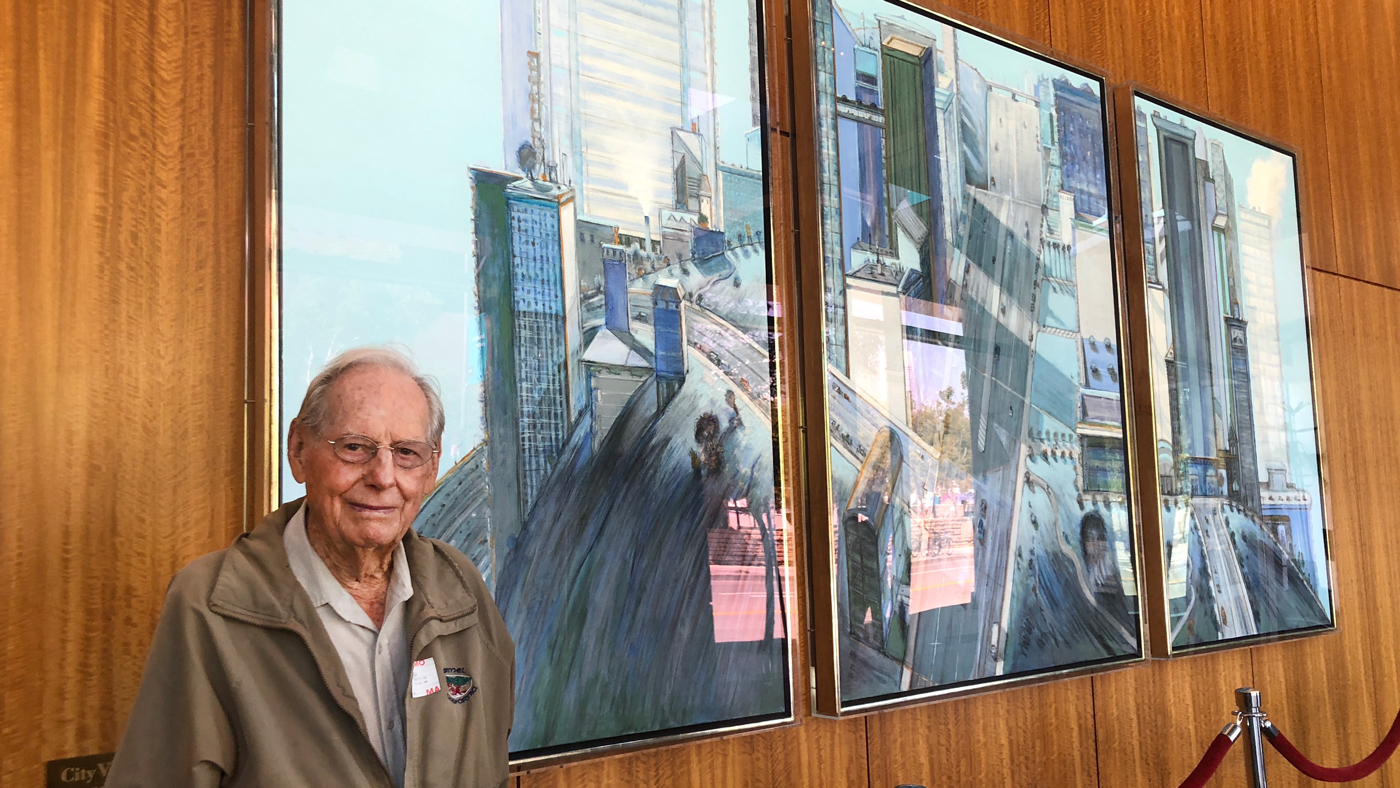
Wayne Thiebaud posed in front of his painting during his visit to Gladstone in 2019.
“It’s a magnificent masterpiece,” says Senior Investigator Bob Mahley, MD, PhD, who was Gladstone’s president when the work was commissioned. “To me, that painting has always been Gladstone exemplified; we’re always reaching to the sky with the high standards of our science, and for me, that’s what Mr. Thiebaud painted.”
For Mahley, losing the painting will be bittersweet, but for a very worthwhile purpose.
“It’s to help support our mission of training future generations of scientists,” he says.
Young scientists are the lifeblood of any major research organization, and in the research fields that Gladstone pursues, they are critical for developing new approaches to understand and treat diseases.
At any given time, Gladstone has approximately a hundred postdoctoral scholars. Each will join after completing a graduate degree (PhD or MD) elsewhere, and will stay for approximately 4 or 5 years to work on their own research project, under the guidance of a Gladstone investigator. After completing their training, postdocs will move on to share their knowledge and expertise around the globe, often seeding new research groups themselves.
“They are incredible scientists, now working in our labs under a fellowship or scholarship,” says Obana. “We are able to attract talent from around the world to Gladstone, and this new fund will help young scientists make the economic jump to the San Francisco Bay Area.”
The specific mechanisms for how the fund’s proceeds will be used to support the postdocs haven’t yet been decided, and will depend on how much City Views brings in through the auction.
In the meantime, Srivastava hopes the attention given to Thiebaud’s work will help highlight the parallels between art and science.
“Art and science have so many commonalities,” says Srivastava. “As an artist, you start with a blank canvas and you discover through your art. With science, you have a hypothesis, but you also start with a blank slate. Through the process of discovery, you can prove and validate your hypothesis to confirm the science and create something meaningful for the world.”
Support Discovery Science
Your gift to Gladstone will allow our researchers to pursue high-quality science, focus on disease, and train the next generation of scientific thought leaders.
From Mentorship to Legacy: Creating Opportunity for Early Career Scientists
From Mentorship to Legacy: Creating Opportunity for Early Career Scientists
Robert and Linda Mahley’s commitment to trainee development continues through Gladstone’s annual Career Advancement Awards.
Graduate Students and Postdocs HistoryGladstone Mourns the Loss of Founding Trustee Richard D. Jones
Gladstone Mourns the Loss of Founding Trustee Richard D. Jones
Jones lent Gladstone his time and expertise for nearly 50 years.
History Institutional NewsRemembering Bill Rutter, a Biotech Visionary and Champion of Gladstone
Remembering Bill Rutter, a Biotech Visionary and Champion of Gladstone
William J. Rutter, PhD, was a pioneering force in biomedicine whose vision shaped San Francisco’s Mission Bay neighborhood into a hub for innovation and discovery.
History Profile

